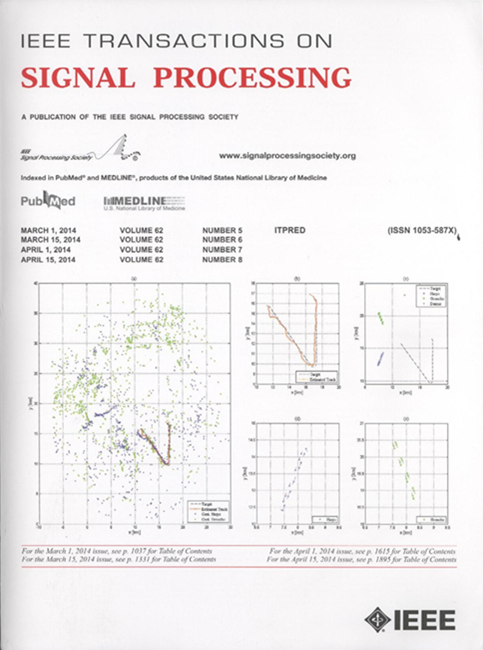Sensing-Aided Precoding With High-Dynamic Moving Scatterers
IF 5.8
2区 工程技术
Q1 ENGINEERING, ELECTRICAL & ELECTRONIC
引用次数: 0
Abstract
Sensing information can be leveraged to reduce the overheads associated with establishing and maintaining multiple-input and multiple-output (MIMO) communication links. Such information can be acquired from integrated sensing and communication (ISAC) capabilities. In this paper, we use sensing information to make precoding for spatial multiplexing more robust in high-dynamic environments with both quasi-static and mobile scattering objects. The significant variability of scattered paths requires frequent reconfigurations of the precoding matrices. To address this, we propose a sensing-aided precoding scheme for channels with high dynamics, leveraging the identification and localization of moving targets to concentrate energy mainly on slow-varying paths. Specifically, the geometric structure of the time-varying channel matrix is analyzed to uncover deviations in the location parameters of moving targets. A channel division criterion is then devised to partition the channel matrix into two matrices characterizing the paths of background scatterers and moving targets, respectively. Exploiting the digital-analog dual orthogonality between these matrices, precoding and combining matrices are jointly designed to suppress transmission leakage over mobile paths in both analog and digital domains. Numerical simulations validate that the proposed method achieves high spectral efficiency without requiring explicit channel tracking, thereby reducing complexity and overheads compared to conventional MIMO precoding methods.基于高动态移动散射体的传感辅助预编码
可以利用传感信息来减少与建立和维护多输入和多输出(MIMO)通信链路相关的开销。这种信息可以从综合传感和通信能力中获得。在本文中,我们利用传感信息使空间复用的预编码在具有准静态和移动散射目标的高动态环境中更加鲁棒。分散路径的显著可变性要求频繁地重新配置预编码矩阵。为了解决这个问题,我们提出了一种用于高动态信道的传感辅助预编码方案,利用运动目标的识别和定位将能量主要集中在缓慢变化的路径上。具体来说,分析时变信道矩阵的几何结构,揭示运动目标位置参数的偏差。然后设计了信道分割准则,将信道矩阵划分为两个矩阵,分别表示背景散射体和运动目标的路径。利用这些矩阵之间的数字模拟对偶正交性,联合设计了预编码和组合矩阵,以抑制模拟和数字域移动路径上的传输泄漏。数值仿真验证了该方法在不需要显式信道跟踪的情况下实现了较高的频谱效率,从而与传统的MIMO预编码方法相比降低了复杂度和开销。
本文章由计算机程序翻译,如有差异,请以英文原文为准。
求助全文
约1分钟内获得全文
求助全文
来源期刊

IEEE Transactions on Signal Processing
工程技术-工程:电子与电气
CiteScore
11.20
自引率
9.30%
发文量
310
审稿时长
3.0 months
期刊介绍:
The IEEE Transactions on Signal Processing covers novel theory, algorithms, performance analyses and applications of techniques for the processing, understanding, learning, retrieval, mining, and extraction of information from signals. The term “signal” includes, among others, audio, video, speech, image, communication, geophysical, sonar, radar, medical and musical signals. Examples of topics of interest include, but are not limited to, information processing and the theory and application of filtering, coding, transmitting, estimating, detecting, analyzing, recognizing, synthesizing, recording, and reproducing signals.
 求助内容:
求助内容: 应助结果提醒方式:
应助结果提醒方式:


